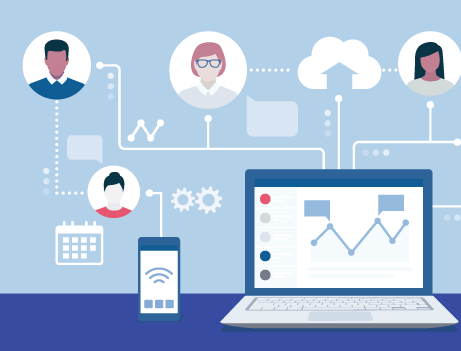Consider what happens if digital apps or services go down. Companies lose revenue, decrease productivity, compromise customer loyalty and the list of repercussions goes on, depending on the business. Indeed, modern business continuity is contingent on a well-functioning suite of consumer and commercial apps and services.
To serve both internal and external end-users, enterprises must ensure their technology’s continuous availability. This requires tools and talent. Enterprises must invest in monitoring technology and employ a team of DevOps and site reliability engineers (SREs) to fix incidents if they arise. But a surprising number of businesses make this now essential IT function more complicated — and thus, far less effective — than it needs to be.
The problem: disparate tools
Most large enterprises know the importance of monitoring but fall into a common trap. Instead of getting singular visibility into systems and applications, enterprises use a mish-mash of monitoring tools that don’t talk to each other and have multiple owners.
But more tools and more people only increase complexity and compromise outcomes.
In many enterprises, too many people look at too many tools that contain too much siloed data. So, when incidents occur, the response is slow and resource-heavy. Frequent situation rooms pull in multiple people trying to resolve a single problem. And, perhaps even worse, teams don’t know about incidents until they’re already negatively impacting the business.
In today’s accelerated digital economy, there’s no time for heavy tool stacks or unwieldy all-hands meetings. Enterprises need insights that tell the full story of what’s happening behind their systems from a single source of truth.
The solution: a holistic AIOps platform
An advanced artificial intelligence for IT Operations (AIOps) tool provides a comprehensive view of data from multiple sources to identify potentially disruptive incidents, often detecting problems before they become critical. If the tool detects an incident, it notifies the responsible team members while providing context to the problem and determining its root cause.
The result? Taking a singular approach to monitoring reduces the number of business-impacting incidents and the time and resources required to resolve them.
From a broad perspective, a holistic AIOps tool helps DevOps practitioners and SREs meet service level agreements (SLAs) and minimize the risk of rolling out releases that negatively impact an application. With time back in their days and the confidence to innovate, these teams can work on initiatives that drive their businesses forward.
What sets Moogsoft’s AIOps solution apart?
Some AIOps vendors make a lot of noise, but none provide the accurate early incident detection that Moogsoft’s solution does. Moogsoft’s purpose-built, holistic AIOps tool uses metric and event data to detect true anomalies early in the incident lifecycle.
The patented artificial intelligence (AI)- and machine learning (ML)-driven pattern identification learns normal system operating behaviors and prevents the same disruptive incidents from happening again. DevOps and SREs also benefit from the AIOps solution’s automated workflows that expediently route, remediate and auto-close incidents.
For enterprises plagued by multiple monitoring tools and frequent, chaotic war rooms, the efficiency and simplicity that Moogsoft’s holistic AIOps solution provides probably sounds too good to be true. If you fall into that category, I urge you to take our solution for a test drive! Sign up for a free trial of Moogsoft’s AIOps platform — we’re so confident in our product that we won’t even ask you for a credit card.






